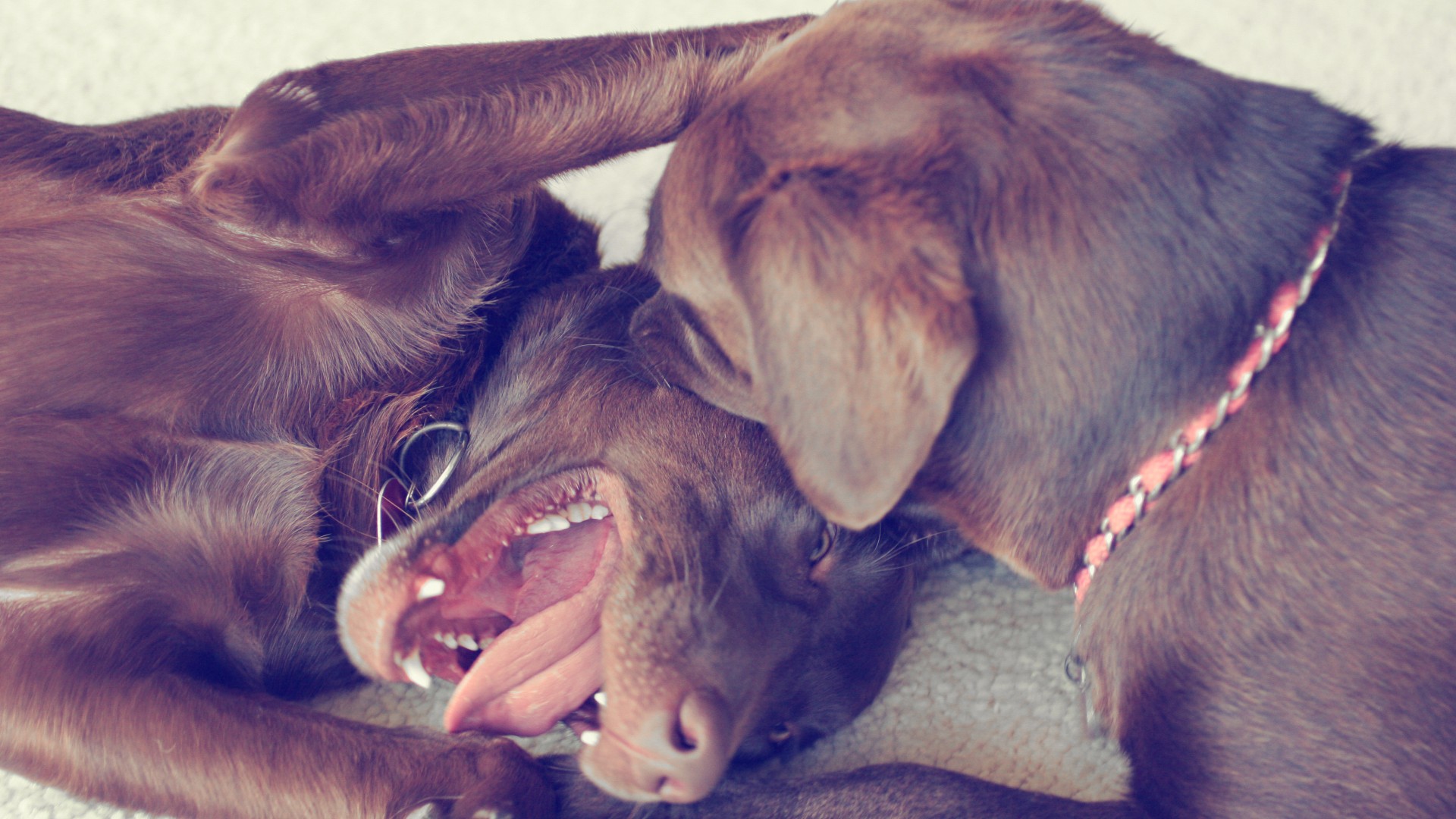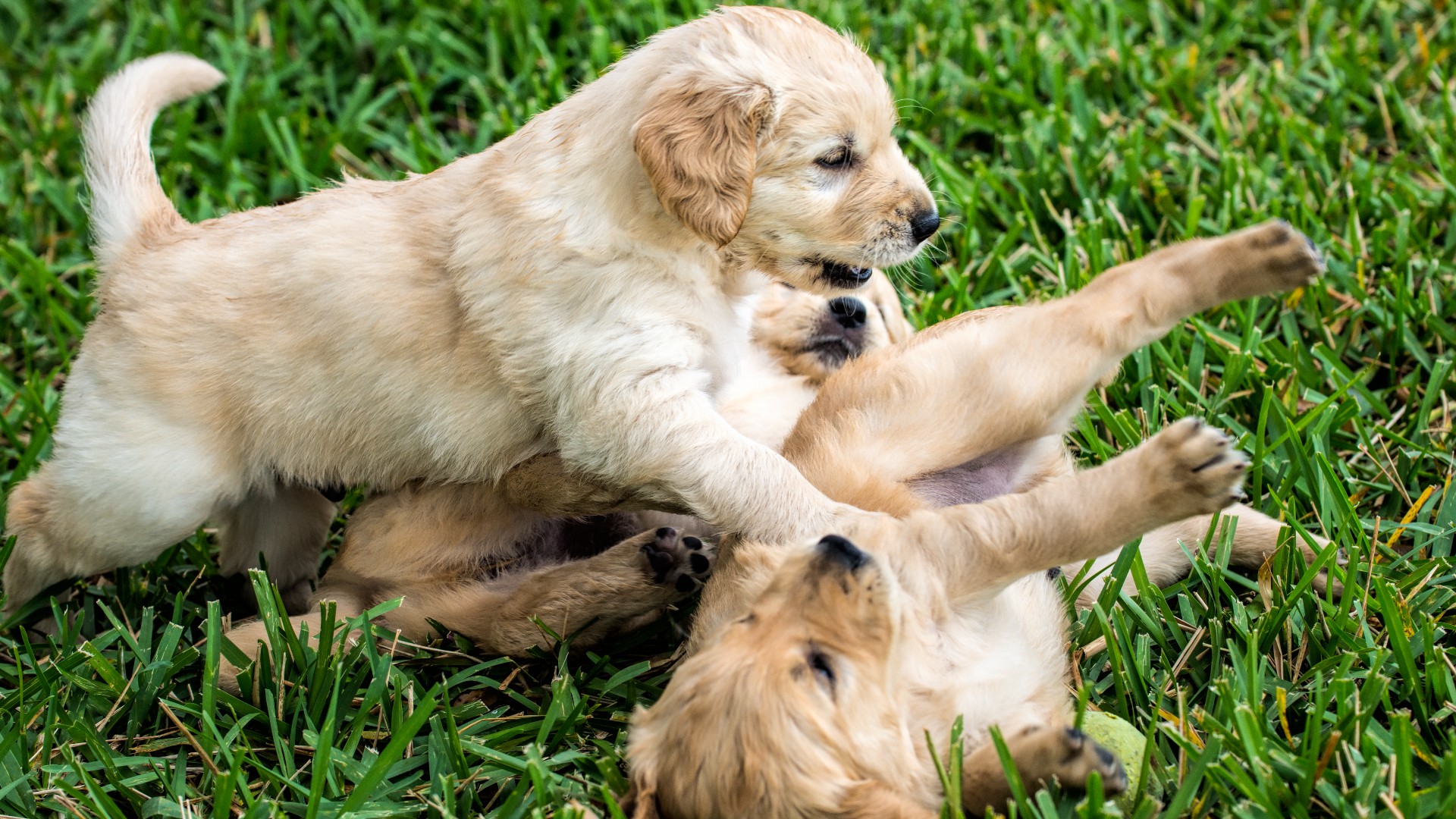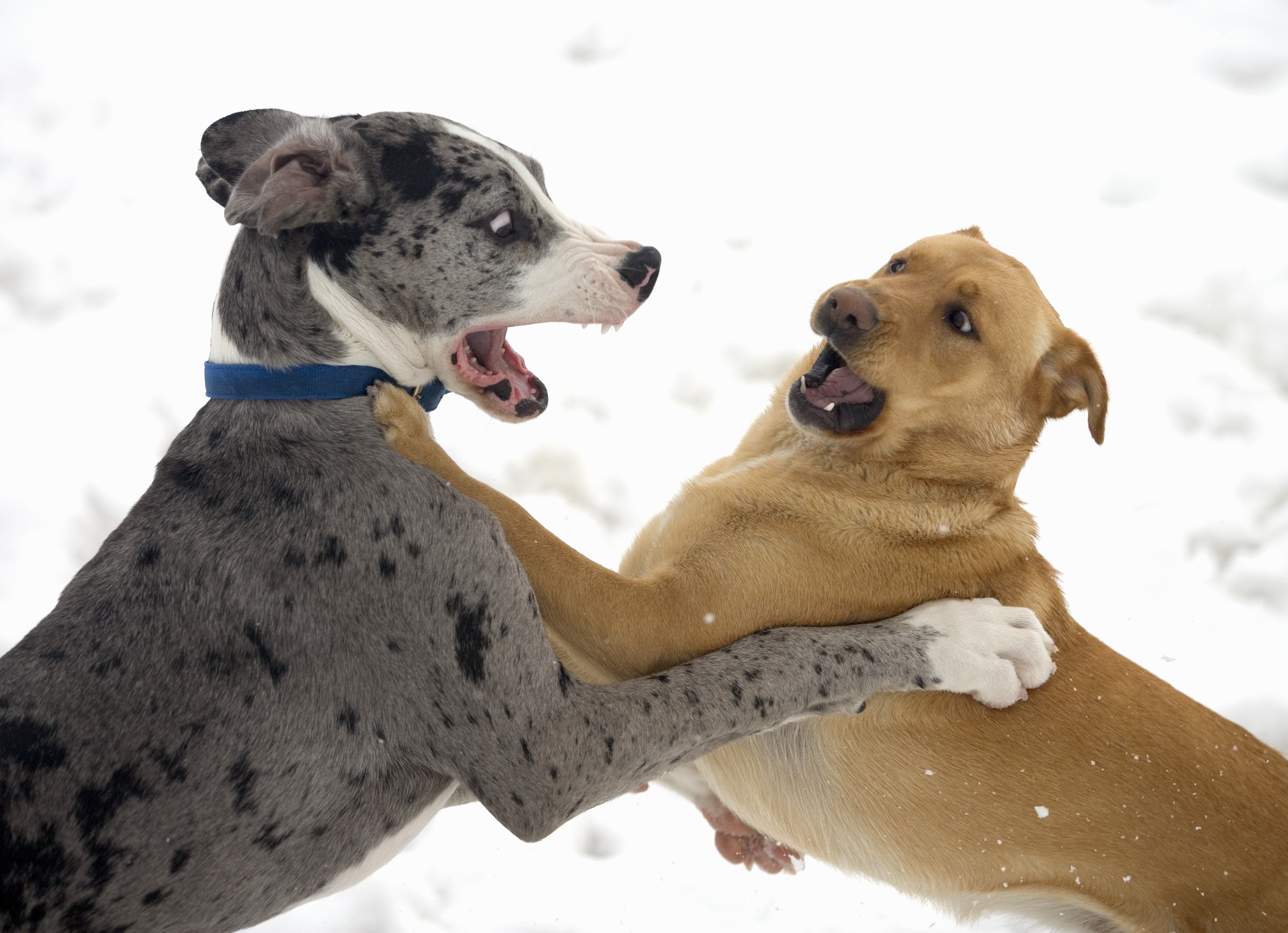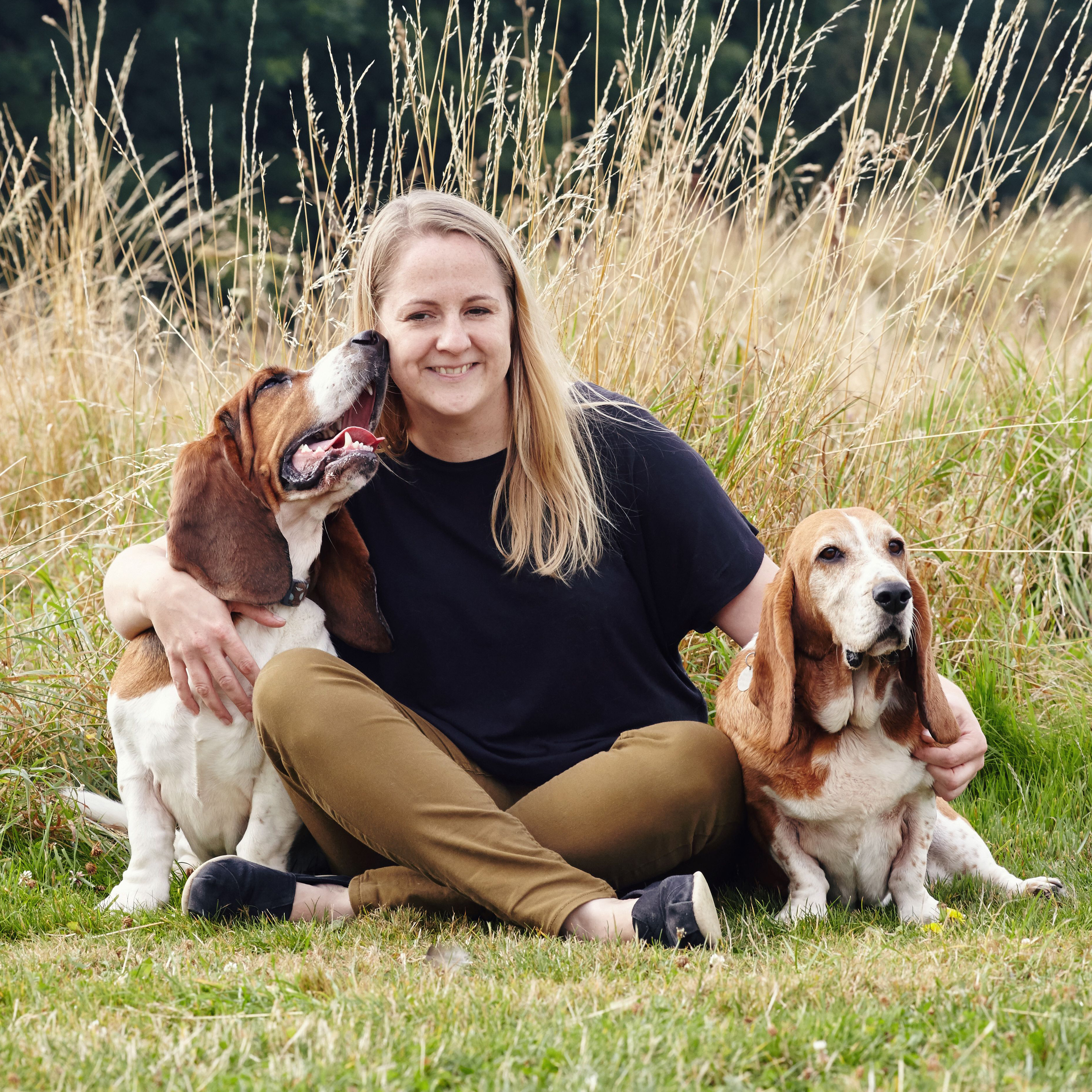Dog Play Fighting: The good, the bad, and the ugly!
Is dog play fighting normal? How can I tell when it’s got out of control and it’s time to end the fun?

Dog play fighting is a natural behavior that begins early in a dog’s life, when they’re still puppies in the whelping box. Play fighting is a way for dogs to establish boundaries, build trust, and develop their physical and social skills. However, it’s important to distinguish between play fighting and actual aggression, as the latter can be dangerous and harmful.
Some dogs may find it frustrating to be around other dogs if they aren’t allowed to continually play with them. This often indicates that a dog is too aroused and they could benefit from some calming activities such as enjoying a favorite longest lasting dog chew or doing some scentwork.
While it can be positive for dogs to spend time together playing, their owners need to continually monitor their dogs' behavior during play fighting to ensure that it does not escalate into real aggression. When it comes to play fighting between dogs, it can vary widely in intensity.
Not all playtime is good! But how do you tell the difference? Read on for our guide on appropriate play between dogs.
What does it mean when dogs play fight?
Play fighting is a form of play behavior that constitutes mock aggression without the intention of causing harm. For it to be the most balanced and ideal type of play fight, each participating dog will swap between high intensity movements - such as chasing, wrestling, or even play-biting - to calming, appeasing gestures such as bowing, sniffing, or simply taking a break.
During play fighting, dogs often take turns being the leader or ‘rule setter’ of the game. You may see mirroring of body language, whereby one dog copies the movements of another. The dogs will use a variety of body language and vocalizations to communicate with each other.
Play fighting is a normal behavior for dogs and is part of their socialization and learning process. It helps them to develop physically and socially. However, it's important to note that play fighting can sometimes escalate into real aggression if dogs become too aroused or if their play becomes too rough. Puppies especially need encouragement to take regular breaks in play so that they can calm down, lowering levels of adrenaline before returning to the fun.
Get the best advice, tips and top tech for your beloved Pets
Is it okay for dogs to play fight?
Well-socialized dogs make the best play buddies - as do dogs who have similar play styles and compatible personalities. Just as all humans aren’t going to be best friends, all dogs will not be a good match together. While playing with other dogs can help a young dog to improve their social skills and build relationships with other canines, we need to be mindful of any signs of stress that a dog isn’t actually enjoying the situation. Sometimes a dog can get into play with another dog that is actually bullying them by not allowing them to take breaks or retreat.
You’ve probably heard the saying, “too much of a good thing”? That’s definitely true when it comes to discussing dog play. While playing with other dogs is a great activity, it’s really important that our dogs are also able to relax around other dogs too. To be able to switch off and get all-important rest. When dogs play for too long or at too high a level of arousal it is much more likely to head towards a real fight. Teaching your dog an interrupter cue - a word that means ‘come to your human for a treat’ - can be a great way to quickly pause play if it looks like it’s becoming too much for any of the dogs involved.
How do you tell if dogs are playing or being aggressive?
Play should be balanced between all the dogs involved. If one stops to have a break, the other dogs should respect that and allow them time. There should be a swapping of roles, for example the chaser becoming the chased.
If an individual dog is not respecting the other dogs around it or finds it hard to stop playing, it might be that they have been allowed to play too frequently in the past and not taught the important life skill of taking breaks. These dogs can appear to be aggressive, but are often just frustrated.
When looking for signs that a dog is becoming aggressive during play it is important to monitor their body language. When a dog swaps from soft, relaxed body posture to a more tense stance it can be a sign they’re uncomfortable. You might see their tail go stiff and upright. Their previously hidden teeth could now be on display and their vocalizations may swap from barks to growls. A dog who is being aggressive will often stalk another, not allowing them to move away and retreat. They may stand still over the other dog, pinning them down - or it could escalate to biting or ragging the other dog.

Dog play fighting behaviors
- Open-mouthed grinning
- Bouncy, exaggerated, goofy movements
- Play bowing, or putting their front end down and their rear end up in the air - dogs trying to initiate play may slap their front legs on the ground a few times
- Loud growling and snarling that is exaggerated
- Mirroring of other dog’s body language
- Being able to take breaks in play fighting, before returning to play again
Dog behaviors that are aggressive/real fighting
- Stiff bodies, raised hackles (hair standing up along their spine)
- Quick, stiff, efficient movements - no bounciness or exaggeration
- High tense tail, often wagging very fast
- Closed mouth with a curled lip
- Low, grumbling growl that acts as a warning
- One dog trying to get away from the other
- Pinning down of another dog, not moving when they try to escape

How to safely break up a dog fight
Aggressive dog fights are luckily pretty rare occurrences. But if your own dogs have a falling out at home or there is a fight at the local dog park, it’s important to know what to do to end the interaction as soon as possible.
Firstly, the most important thing is to stay as calm as possible. Keep your breathing deep and slow, counting each breath in and out. Dogs can smell our stress - which could cause a further ramp up of their own emotions.
Next, try calling each dog’s name, adding some attention noises like kissy sounds or clicking your tongue - anything that could potentially distract them. If you know that food isn’t something these particular dogs would fight over, you can also throw treats on the ground to further distract them.
Avoid where possible touching the dogs with your own hands - especially around the collar area. Dog bites mostly happen when they’re grabbed around this sensitive area. You’re also risking the other dog biting you too if you get close. If there are any objects that could be used to create space between the dogs - for example a chair if at home or a large stick if on a walk - slowly move this object between them. Avoid hitting either dog with these objects as that could be misconstrued as further pain being inflicted by the other dog, increasing the energy of the fight. Blankets can also be thrown over each dog to disorient them but be aware that they could easily shake these off and return to each other.
As a last resort, use the ‘wheelbarrow technique’ which involves someone taking hold of an individual dog’s hind legs or tails - ensuring all dogs involved are restrained in this way - and moving slowly away from each other. Once you’ve moved to a safe enough distance you can let go of the dog’s back end and attach their leash immediately.
Once the dogs are separated, make sure to check them over physically to see if any damage has been caused. Even if you can’t see any puncture wounds, it’s worth taking your dog to be assessed by your vet to ensure no internal damage has happened. Give your dog a few days to recuperate emotionally, taking time off from the world and focusing on fun activities like scentwork in your yard, trick training, and lots of long lasting chews. Natural stress support can be offered through bach flower remedies or herbal supplements.
It's important to remember that prevention is the best way to stop dog fights, so always supervise your dogs when they are together and seek professional help if you notice any signs of aggression.

Caroline Wilkinson is a Certified Animal Behaviorist. She is a Full (assessed) Member of the Association of Professional Dog Trainersand INTODogs – as well as a Registered Training Instructor (ABTC). Caroline is also a Certified Real Dog Yoga Practitioner and an Applied Canine Zoopharmacognosist.
As the founder of digital pet coaching service Barket Place, Caroline has a passion for improving connections between human and hound, with a focus on relationships and reduction of stress for canines living in a human world. She helps pet parents, like you, to work through challenges they may be experiencing with their dog's behavior, so that they can get back to the important job of loving their dog.
Caroline writes for Edition Dog Magazine, as well as a number of trusted pet brands. She also speaks around the country – presenting workshops and webinars with a focus on living more mindfully alongside our canine companions. She is also the co-host of chart-topping podcast, ‘Supporting Both Ends of the Lead’ and has spoken about dangerous dogs on BBC Points West and BBC Radio Bristol.
